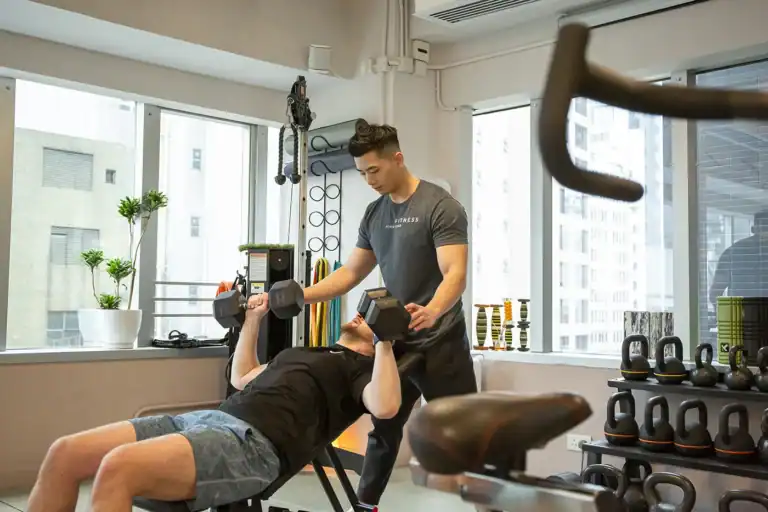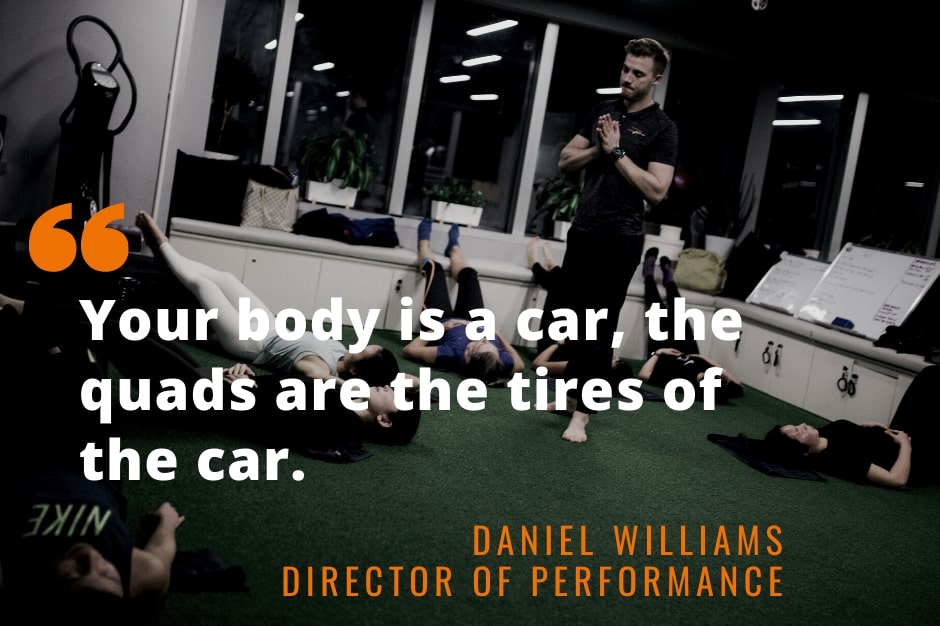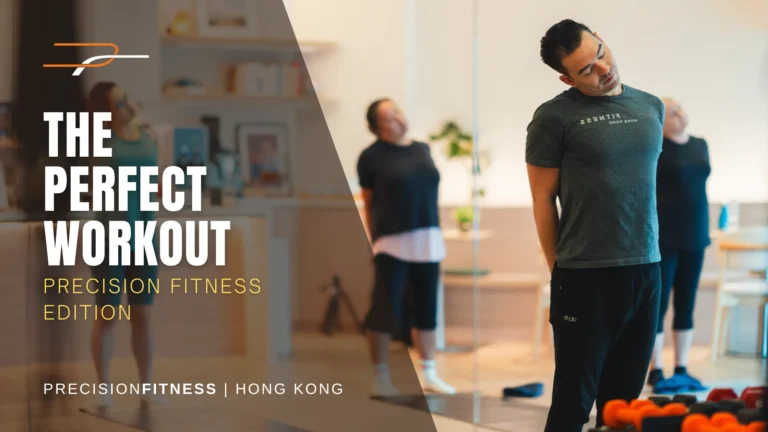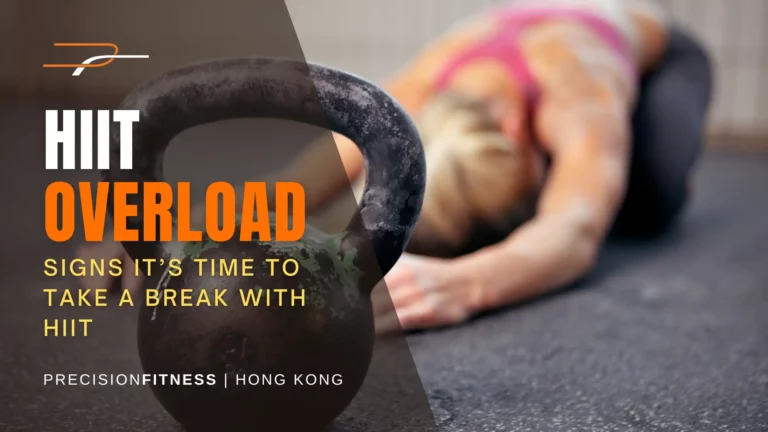
The Smart Way To Start: Beginner-Friendly Strength Training in Hong Kong
If you feel unfit, stiff, or intimidated by gyms, you are in the right place. Strength training can be simple, joint-friendly, and time-efficient.

“The thighs“, “them quads”, “them tree trunks” …
Whatever you want to call them, the quads are some big muscles that do a lot of work to support the body.
For this reason, you’ll want to take measures to keep yours in top shape to handle your body’s demands and keep you free from injury.
In this article, we cover:
As the name might suggest, ‘the quads’ are four different muscles which run from around your knee all the way up to around your hips.
Think about the number of times you bend your knees or move your hips.
Every time you do either one of these actions, you are creating some kind of impact on the quads.
However, they’re typically used in two very different ways:
Sitting at work leaves them in one position for an extended period of time.
Standing, walking to the water cooler, bending over to tie your shoelace, and then going back to sit down can activate these muscles several times over the space of just a minute.
So, we use the quads a lot and they’re almost always in some kind of stretched or shortened position.
Any time you bend your knees or hips, your quads are hard at work. This includes a great number of daily actions, such as bending, kneeling, walking, running and twisting.
Think of your body as a car.
If the glutes are the engines, then the quads are the tyres.
And if your tyres get a puncture, you’re not going anywhere fast.
Strengthening your quads can play a crucial role in maintaining your pain-free status quo. On top of that, you’ll receive a benefit when participating in any exercise or sport where you’re using your legs and the quads are kicking in.
Here are some examples:
hiking
kicking a ball
going for a run
cycling
any kind of lower body gym work
basketball, football, rugby, netball, badminton, tennis, volleyball.
Having strong quads is not only going to help you do these activities, but it will also help you become better at them.
Why?
Having strong quads means you won’t have to worry about how long that hike is, how intensely you’ll be exercising during that football sprint – freeing your mind up to work on other aspects of your game or activity, such as technique, movement or tactical positioning.
Whilst there are plenty of different exercises and ways of strengthening the quads, we’re going to stick to one that’s super simple and easy. One where you don’t have to worry so much about technique.
We’re going to be working with the leg press.
The key to this workout is doing it in a manner that allows you to focus on progressively adding weights over time.
Here’s what to do:
There are different ways to achieve our goal of building strength.
We’ll look at two different workouts:
Using pauses to build position-specific strength
Adding load (weight).
Try using the first method for 3 to 4 weeks, before moving onto the second method for the next 3 to 4 weeks.
Aim for 3 sets of 5 – 7 reps, with around 90 seconds’ rest between sets, following this guidance:
If you can do 3 sets of 7 reps, then you’re allowed to increase the weight.
If you can’t do 3 sets of 5 reps, then you should decrease the weight.
Aim for 5 sets of 3 – 5 reps, with around 90 seconds’ rest between sets. In a similar manner:
If you can do 5 sets of 5 reps, then you’re allowed to increase the weight.
If you can’t do 5 sets of 3 reps, then you should decrease the weight.

Stretching your quads after your workout will protect you from injuries while helping ensure your quads remain in prime condition and able to rotate through the full range of motion.
Foam rolling has been shown to reduce soreness and Delayed Muscle Onset Soreness (DOMS).
We recommend Trigger Point Therapy’s Grid Foam Roller – the plastic inside keeps them from warping over time and keeps a pretty good firmness. Plus, they come in some pretty awesome colours and patterns … so you look like a badass when rolling.
But of course, there are plenty of other good options out there too.
Here’s what to do:
Lie on your front.
Bring one knee up to your side as high as you can (as in a ‘soldier crawl’ position).
Place the roller just above your knee whilst resting on your forearms.
Slowly roll up your quads, using your forearms and the knee by your side for support. Try to spend 8 seconds rolling all the way up.
When you find any tender or painful spots, try to bend and unbend the knee.
Once you’ve gone as high as you can without hitting bone, go back down the leg in the same manner.
Aim to go slowly and smoothly through the whole exercise.
The quads have a role in so many actions and movements that building stronger quads is a no-brainer.
Stronger quads will help provide a powerful boost to leggy actions, while making you less susceptible to injury while supporting your ability to twist, turn, kneel and bend during everyday activity.
Take care of the big muscles that do the majority of your body’s work and you’ll be good to go.

If you feel unfit, stiff, or intimidated by gyms, you are in the right place. Strength training can be simple, joint-friendly, and time-efficient.

Struggling to stay on track with your fitness goals over the weekend? You’re not alone! In this post, we dive into “Weekenditis” and share simple strategies to help you avoid weekend overeating and keep your progress on track.

Let’s debunk some common alcohol myths and reveal the science-backed truths that might make you reconsider that next drink—especially if you’re serious about your health and fitness goals.

At Precision Fitness, we’re always refining our approach to create the best possible experience for our members. While “perfect” might be a lofty term, we believe there’s an optimal workout structure that aligns with individual goals, especially in a supportive, non-intimidating environment like ours.
As active people in Hong Kong pursuing health and fitness, we often have packed days. Here are some tips to keep the glow and lose

Share: Only doing HIIT workouts is like only driving your car at 9000 rpm. Not only is it hard on the engine, but you’ll decrease
We’re not called Precision Fitness by accident. We want to offer you the perfect membership or package for your needs. Simply fill out the form below and one of our amazing coaches will reach out to you.